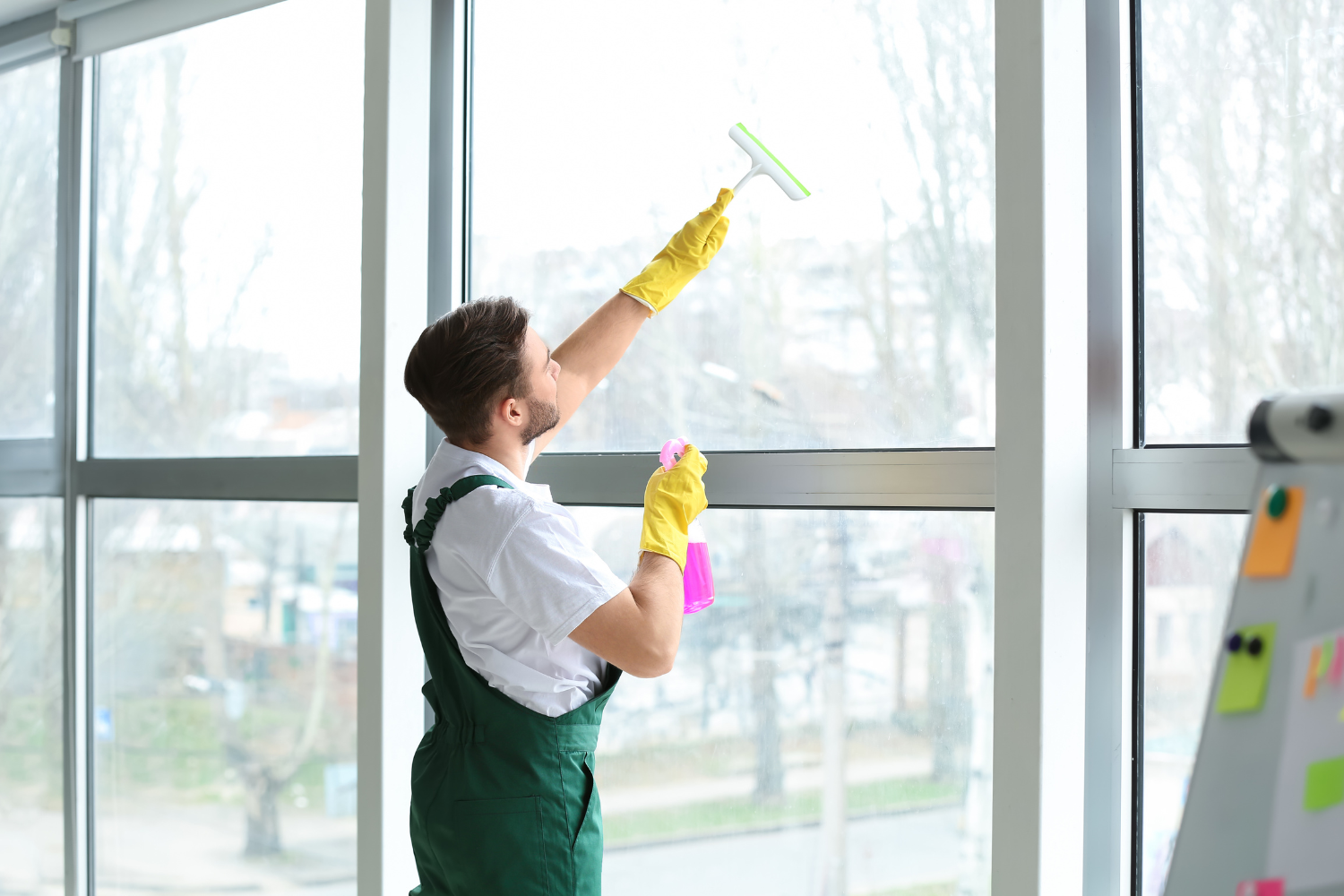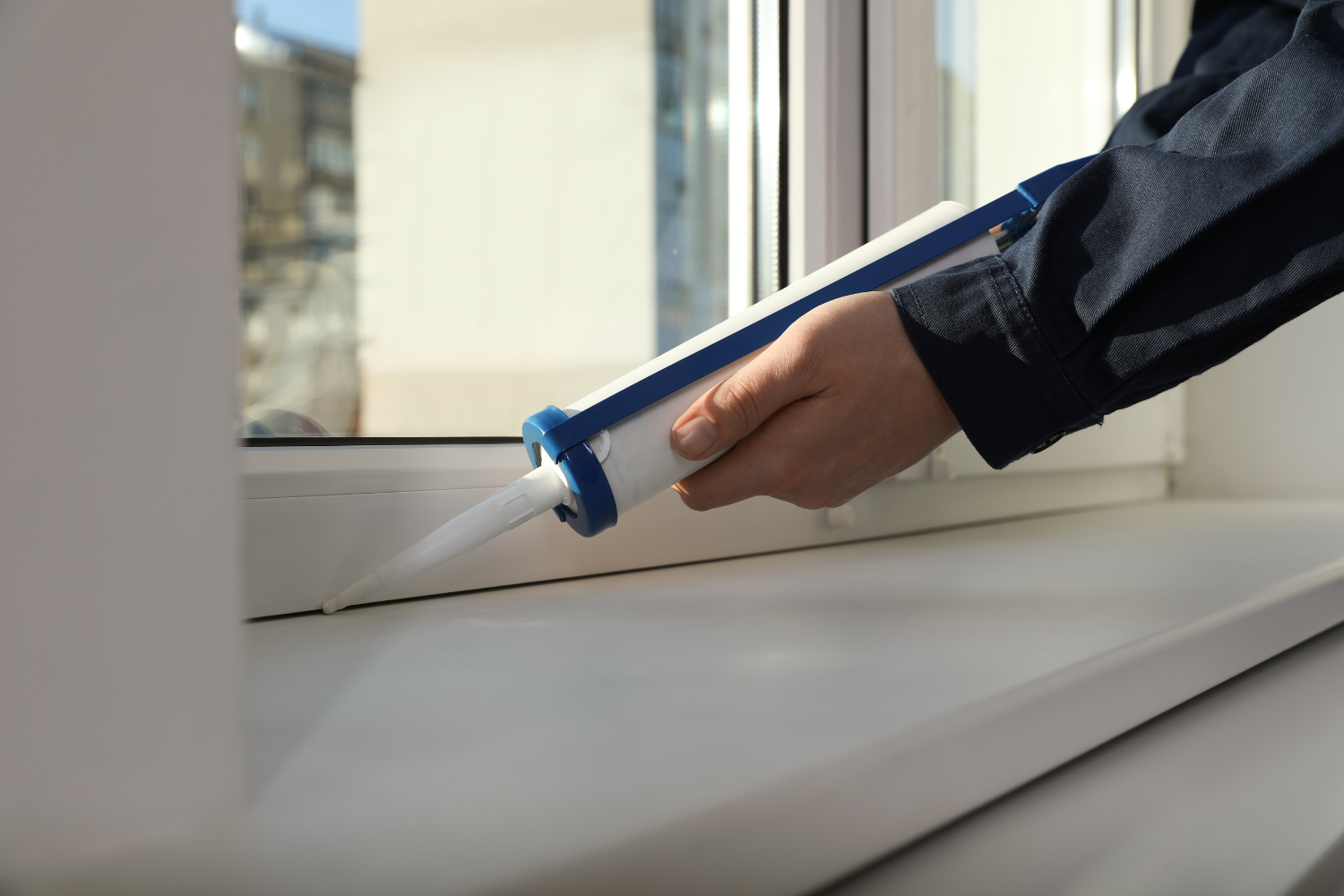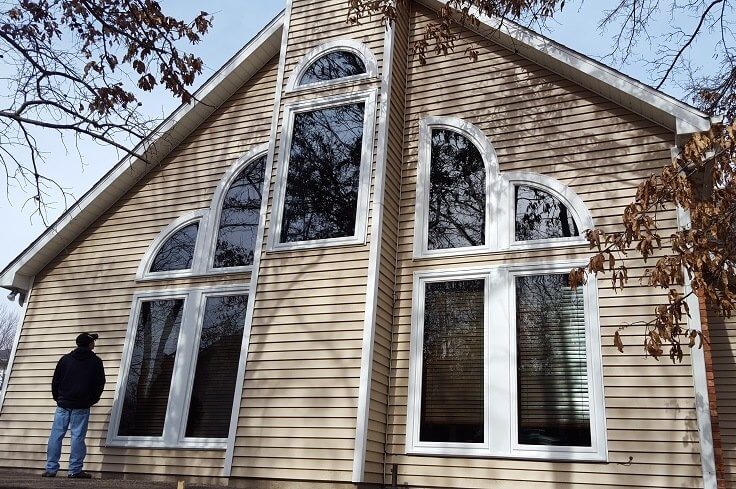Maximizing Durability: How Can I Extend the Lifespan of My Windows?
Are you tired of skyrocketing energy bills and uncomfortable drafts? Discover the secrets of maximizing the longevity and energy efficiency of your windows by asking yourself, “how can I extend the lifespan of my windows?” Learn how to care for and maintain your windows properly, and unlock the potential of your home’s energy performance.
Key Takeaways
- Regular maintenance and upgrades of window frames, sashes, glass, caulking/weatherstripping can extend lifespan and improve efficiency.
- Making the right call on repair vs replacement is essential for optimal condition & longevity.
- Smart practices such as routine maintenance & energy efficient upgrades help create a comfortable living environment with lasting windows.
Maximizing Window Longevity: Maintenance and Care

A person cleaning a modern vinyl window frame to extend its lifespan.
A regular routine of maintenance and care can significantly increase the longevity of modern windows. This includes care for frames, sashes, and glass. The type of window frame also plays a significant role in determining the lifespan of your windows. For instance, vinyl windows can last 20-40 years, wood windows up to 30 years, and aluminum windows around 20 years. It’s recommended to replace windows if they are more than 20 years old, increasingly difficult to clean, or if energy bills are rising.
Window replacement can result in a significant decrease in energy costs, prolonging the lifespan of the HVAC system, enhancing curb appeal, and modernizing an older house. In fact, replacing windows is a wise investment for homeowners looking to improve their property’s overall efficiency and aesthetics.
Keeping Frames in Top Shape
Proper maintenance of window frames, irrespective of their window materials, helps prevent damage like warping and rotting, thus extending their lifespan. Thorough cleaning and lubrication of the entire window, including frames and sashes, promotes optimal performance and longevity. Upgrading to a higher quality material, such as fiberglass windows, can extend the life of your windows to up to 60 years with proper maintenance.
Wood frames, in particular, require special attention. For wood window frames, regular cleaning and application of a protective sealant or finish are necessary to prevent moisture damage and decay. By following these simple maintenance steps, you can extend the life of your wooden window frames and keep them looking their best.
Sash Savvy
Keeping sashes clean and well-lubricated avoids sticking, making windows easier to operate and reducing wear and tear. To clean window sashes, use a combination of dishwashing liquid and water, along with a sponge or soft cloth. White vinegar can also be used for a more effective result. Experts recommend cleaning window sashes at least twice a year, though certain circumstances may require more frequent cleaning.
A spray-on silicone lubricant is the most suitable lubricant for both vinyl and wood window sashes. Correct lubrication:
- Minimizes friction
- Prolongs window life
- Ensures smooth operation
- Avoids damage to the sash mechanism.
Glass Care Guidelines
Cleaning glass on a regular basis and using suitable cleaning products avoids scratches, stains, and other damage, thus keeping the windows efficient and aesthetically pleasing. Some highly effective glass cleaners for window glass cleaning are:
- Biokleen Glass Cleaner
- Invisible Glass Glass Cleaner
- Spic and Span Cinch Glass Cleaner
- Better Life Natural Streak Free Glass Cleaner
Window glass should be cleaned a minimum of twice annually, though the frequency may need to be increased depending on the environment and the amount of dirt present. Regular cleaning can help prevent scratches and stains on window glass by removing abrasive particles that can damage the glass surface.
The Seal is the Deal: Ensuring Airtight Windows

Airtight window seal being checked for drafts to extend the lifespan of windows
Keeping windows airtight is key for energy efficiency and avoiding drafts, which can result in higher energy bills and discomfort. Drafts can cause the HVAC system to work harder, as it struggles to maintain a comfortable temperature inside the home. Here’s how to check for drafts:
- Close and lock the window.
- Place your hand at the bottom or top of the window sash where it meets the frame to assess for drafts.
- If air is felt coming in, then a draft is present.
Drafty windows can result in elevated energy costs, discomfort, and increased humidity. Addressing these issues promptly can help to avert drafts, condensation, and energy loss, thus prolonging the lifespan of windows.
Weatherproofing Wisdom

Applying caulking to weatherproof and extend the lifespan of windows.
Protecting windows from harsh elements with caulking, weatherstripping, and insulation can extend their lifespan and enhance energy efficiency. These materials can effectively seal gaps and cracks, preventing moisture and air from entering and reducing damage caused by moisture, such as rot and mold.
Weatherstripping plays an important role in the longevity of windows, as it helps to:
- Prevent drafts, moisture, and energy loss
- Decrease the pressure on heating and cooling systems
- Prohibit air leakage
- Increase indoor comfort
- Decrease UV radiation
- Block moisture leakage and condensation
Insulation is essential in extending the lifespan of windows by providing these benefits.
Weatherproofing windows can improve energy efficiency by reducing leaks and drafts, maintaining a more stable indoor temperature, and reducing the need for heating or cooling.
Repair or Replace? Making the Right Call

Replacing broken window seal to extend the lifespan of windows.
It is key to understand when windows should be repaired or replaced; quick response to broken seals and cracked frames can prevent additional damage and extend the life of windows. Vinyl windows generally have a lifespan of 20-40 years, so it’s advisable to replace windows if they present any of the following issues:
- Drafts
- Elevated energy bills
- Difficulty in opening and closing
- Condensation between panes
- Visible damage
Addressing Broken Seals
Fixing broken seals in a timely manner can prevent drafts, condensation, and energy loss, ultimately extending the lifespan of windows. Broken window seals occur when the seal between the window frame and the glass has been damaged, permitting air to enter the home.
To repair broken window seals, remove the cracked caulking around the window frame, clean the area completely, and then apply fresh caulking to seal the window. In certain cases, a window specialist may need to be consulted to inject a chemical between the panes to dry up condensation, or the entire pane of glass may need to be replaced if necessary.
Dealing with Cracked Frames
Repairing cracked frames as soon as possible can prevent further damage, such as wood rot or warping, and maintain window efficiency. Cracked frames in wood windows are a danger to the structural integrity of the window. If exposed to moisture, they could lead to wood rot..
To repair cracked wooden window frames, follow these steps:
- Sand the cracked area smooth
- Clean the area to remove any dust or debris
- Fill the cracked area with epoxy filler
- Allow the epoxy filler to dry and harden
- Sand the filled area to make it smooth and blend it with the rest of the frame
- Finally, paint or stain the repaired area to match the color of the window frame.
Upgrades That Enhance Performance and Lifespan

Installing double or triple-pane glass for energy-efficient windows and extended lifespan.
Upgrading to replacement windows with energy-efficient features can improve performance and prolong their service life. Some energy-efficient features to consider include:
- Double or triple-pane glass
- Low-E coatings
- Insulated frames
- Gas fills (such as argon or krypton)
Double pane windows provide better insulation than single paned windows, making them more energy efficient than older windows. Additionally, modern double pane windows are able to block harmful UV rays from sunlight, unlike older windows without protective UV treatments.
The cost of triple-pane windows can vary from $300 to $2,750 per window. With proper maintenance, they can last for an impressive 30+ years. By investing in energy-efficient window upgrades, you can not only enhance the performance and lifespan of your windows but also enjoy long-term savings on energy bills and improved home comfort.
Navigating Installation Costs and Quality
To maximize window lifespan, it’s important to strike a balance between the costs of installation and quality. Investing in expert installation and superior materials can result in long-term savings. The cost of window installation is influenced by various factors, such as:
- Glass type
- Window style
- Window size
- Framing material
- Labor costs
- Warranty coverage
Professional installation provides lasting window longevity through correct installation, excellent workmanship, and warranty support.
By carefully considering the balance between installation costs and quality, you can ensure that your investment in new windows is a wise one. Prioritizing professional installation and high-quality materials will not only help to extend the life of your windows but also contribute to the overall energy efficiency and comfort of your home.
Smart Practices for Sustainable Window Use
Adopting practices for sustainable window use can extend the life of windows and enhance overall home comfort. Here are some tips:
- Routine maintenance: Clean windows regularly and examine and maintain frames and fittings.
- Right ventilation: Substituting weatherstripping and caulking crevices can improve energy efficiency.
- Energy-efficient upgrades: Consider redirecting sprinkler systems and abstaining from pressure washing.
- Regular inspections: Perform regular inspections to identify any issues and address them promptly.
By following these practices, you can ensure the longevity of your windows and create a more sustainable living environment.
Proper ventilation is essential in sustaining window use, as it provides several benefits:
- Prevents the buildup of moisture
- Reduces the likelihood of mold growth and musty odors
- Preserves air quality indoors
- Regulates the indoor environment by removing moisture and facilitating air circulation
By following these smart practices for sustainable window use, you can ensure that your windows, even old windows, remain efficient and durable for years to come.
Summary
In conclusion, maximizing the longevity and efficiency of your windows is essential for maintaining a comfortable, energy-efficient home. From regular maintenance and proper weatherproofing to making the right call on repairs or replacements, implementing these best practices can extend the life of your windows and save you money in the long run. Don’t let drafty, inefficient windows hold your home back – invest in the right care and upgrades to ensure your windows stand the test of time.
Frequently Asked Questions
How many years should a window last?
Windows should be replaced every 15 to 30 years on average, depending on the craftsmanship and materials used.
Do windows last 40 years?
Windows generally last 15-25 years depending on quality and installation, so it is unlikely that they will last 40 years. If you encounter any issues before then, consider replacing the windows sooner to take advantage of any warranties available.
How do I prolong my desktop life?
Protect your hardware with anti-malware software, back up regularly, update the OS, restart the computer on a regular basis, delete files and programs, and avoid overcharging laptop batteries. Choose sturdy devices and embrace digital minimalism to extend the life of your desktop.
How frequently should you replace windows?
For optimal energy efficiency and protection against drafts and water seepage, home windows should be replaced every 15-20 years. Single-pane windows lack insulation and should be upgraded to double-pane windows.
How often should I clean my window glass?
Clean your window glass at least twice a year to keep it in optimal condition and ensure clear views.
About The Author
Elias Abadi
Owner
Elias, the founder of CoMo Premium Exteriors, has steered the company to become a leading exterior renovation firm in Mid-Missouri, emphasizing quality and customer-centric values. A Columbia resident since age 10, he is an ardent Mizzou athletics supporter. Outside of work, Elias enjoys family time, attending his three sons’ sports activities, and engaging in outdoor pursuits like hiking, fishing, gardening, and hunting.










